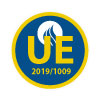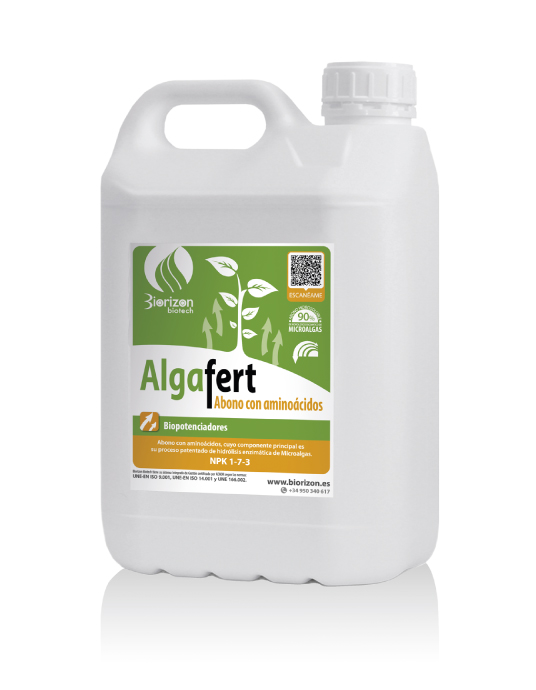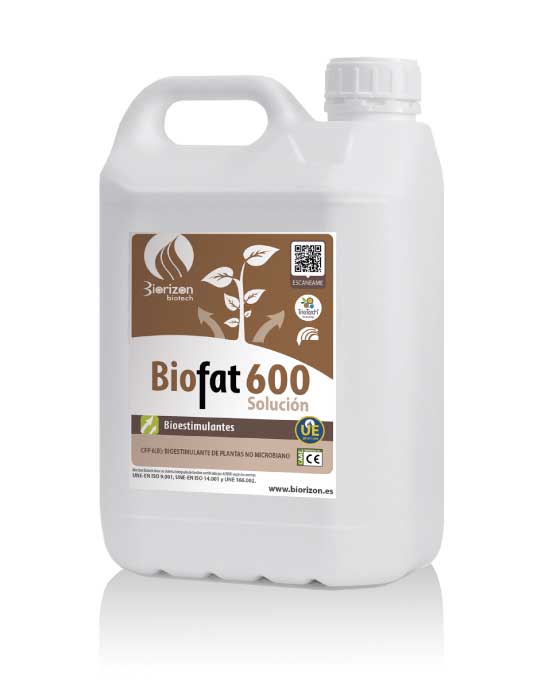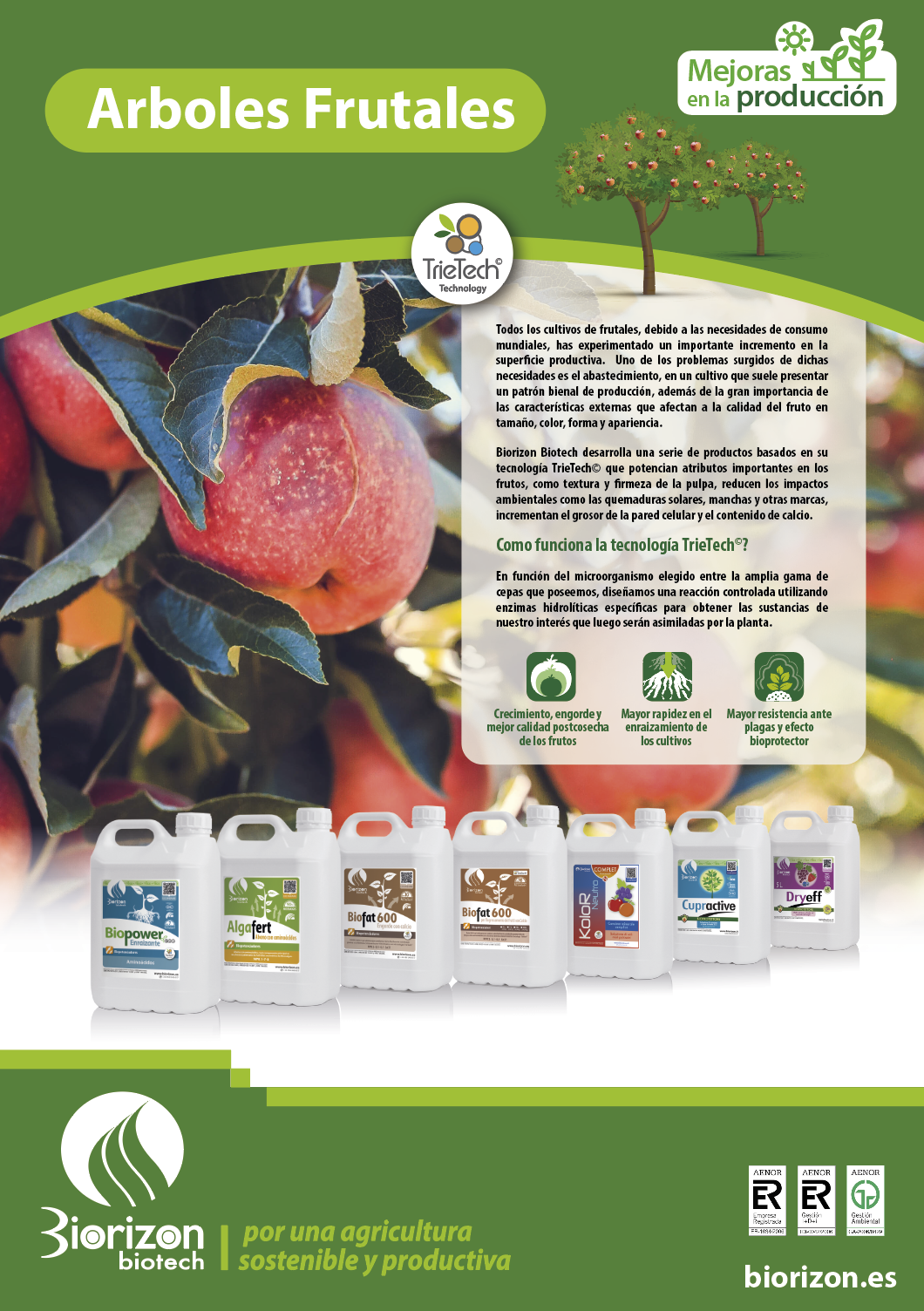I want to Improve Germination and Flowering
Whether you are noticing the decrease of cold hours during the winters, reduction of rainfall or you want to guarantee a good budding, Biorizon offers you a solution for an optimal budding and flowering of your fruit trees.
Biopower eco
The high content of natural phytohormones extracted from microalgae favours the development of the root system and the formation of absorbent hairs, increasing the productive life of the fruit tree. By improving the soil microbiota, they promote the assimilation of nutritional substances already present in crop soils and protect against stress situations.
The high content of natural phytohormones extracted from microalgae favours the development of the root system and the formation of absorbent hairs, increasing the productive life of the fruit tree. By improving the soil microbiota, they promote the assimilation of nutritional substances already present in crop soils and protect against stress situations.
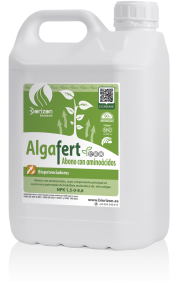
Algafert
Its vitamins, obtained from microalgae biomass, function as a fundamental part of the plant's metabolic processes, resembling phytohormones and enzymes.
These substances, together with the polysaccharides contained in the cell wall of its microalgae, trace elements and antioxidants, provide the fruit crop with a trophic effect: they act by stimulating vegetation and stimulate flowering.
Its vitamins, obtained from microalgae biomass, function as a fundamental part of the plant's metabolic processes, resembling phytohormones and enzymes.
These substances, together with the polysaccharides contained in the cell wall of its microalgae, trace elements and antioxidants, provide the fruit crop with a trophic effect: they act by stimulating vegetation and stimulate flowering.
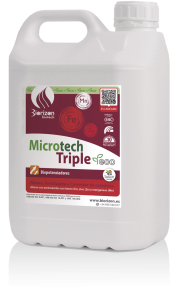
Microtech Triple
Product based on zinc, iron and manganese complexed with microalgae, which when applied to the crop not only produces an optimal assimilation of these elements, but also contributes to optimising the plant's functioning from a physiological point of view. The application of Microtech Triple at the beginning of the vegetative phase prevents the appearance of chlorosis and helps the plant to germinate correctly and increase future production.
Product based on zinc, iron and manganese complexed with microalgae, which when applied to the crop not only produces an optimal assimilation of these elements, but also contributes to optimising the plant's functioning from a physiological point of view. The application of Microtech Triple at the beginning of the vegetative phase prevents the appearance of chlorosis and helps the plant to germinate correctly and increase future production.
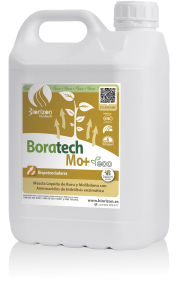
Boratech
Boron is a key element for the fertility of flowers and therefore for fruit set; the combination of this trace element with microalgae greatly improves its absorption by the plant and therefore its effectiveness, also creating a biostimulation effect.
Boron is a key element for the fertility of flowers and therefore for fruit set; the combination of this trace element with microalgae greatly improves its absorption by the plant and therefore its effectiveness, also creating a biostimulation effect.
I want to promote fruit setting and fruit fattening.
Whether you are noticing the decrease of cold hours during the winters, reduction of precipitation or you want to guarantee a good germination, Biorizon offers you a solution for an optimal germination and flowering of your fruit trees.

Biofat 600
Indicated to promote fruit fattening by means of two parallel actions: introduction of calcium and cell multiplication. Biofat 600 contains Leucine, an essential amino acid that increases production by helping fertilisation and fruit set. This achieves greater homogeneity in the fruit, increases brix degrees, regenerates damaged tissue and strengthens the cell wall.
Indicated to promote fruit fattening by means of two parallel actions: introduction of calcium and cell multiplication. Biofat 600 contains Leucine, an essential amino acid that increases production by helping fertilisation and fruit set. This achieves greater homogeneity in the fruit, increases brix degrees, regenerates damaged tissue and strengthens the cell wall.

Algafert Eco
Its vitamins, obtained from microalgae biomass, function as a fundamental part of the plant's metabolic processes, resembling phytohormones and enzymes. These substances together with the polysaccharides contained in the cell wall of its microalgae, its trace elements and antioxidants, provide the fruit crop with a trophic effect: it acts by invigorating and stimulating the vegetation.
Its vitamins, obtained from microalgae biomass, function as a fundamental part of the plant's metabolic processes, resembling phytohormones and enzymes. These substances together with the polysaccharides contained in the cell wall of its microalgae, its trace elements and antioxidants, provide the fruit crop with a trophic effect: it acts by invigorating and stimulating the vegetation.
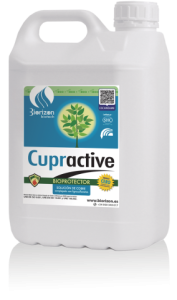
Cupractive
Contains complexed copper, organic acids and microalgae to correct copper deficiencies. The organic complexation of the formulation allows the copper to penetrate quickly and easily into the plant tissue.
Contains complexed copper, organic acids and microalgae to correct copper deficiencies. The organic complexation of the formulation allows the copper to penetrate quickly and easily into the plant tissue.
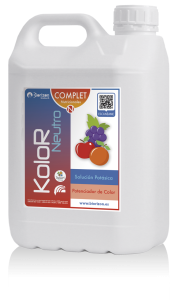
Kolor Neutro
Its microalgae base significantly increases the efficiency of potassium absorption by the plant by favouring the opening of the stomata, which translates into a greater flow of water into the growing fruit cells and an increase in sugar synthesis leading to a higher brix content.
Application is recommended from the fruit growth stage onwards.
Its microalgae base significantly increases the efficiency of potassium absorption by the plant by favouring the opening of the stomata, which translates into a greater flow of water into the growing fruit cells and an increase in sugar synthesis leading to a higher brix content.
Application is recommended from the fruit growth stage onwards.



